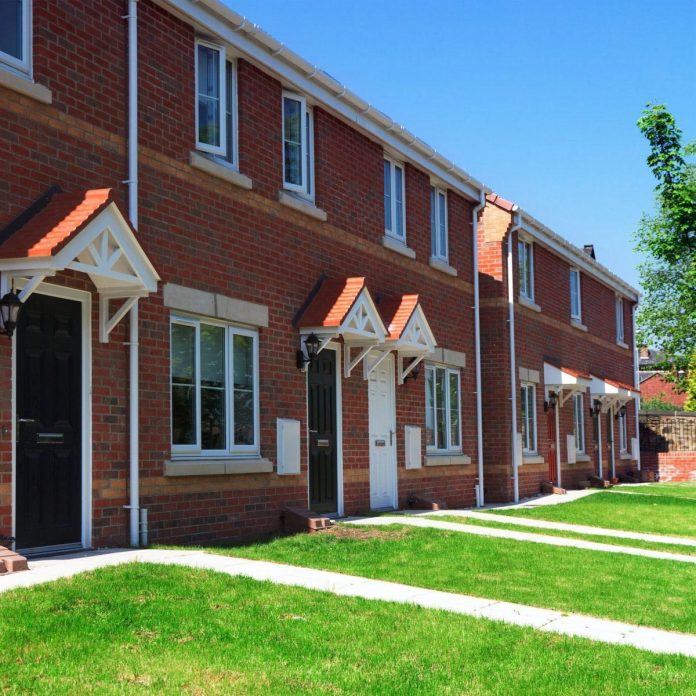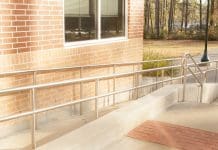The growing national demand for inclusive, accessible housing shouldn’t be a niche issue, as argued by Jean Hewitt, Director of the Centre for Accessible Environments
I’ve written before in these pages about the challenges and merits of the new accessible housing standards in England. As many councils are considering what needs to be included in their Local Plans for housing development, new research from Habinteg and Papworth Trust give us a timely reminder of why accessible housing really matters.
The research in the recent ‘Hidden Housing Market’ report (conducted by the London School of Economics and Ipsos Mori) confirms, with some quite startling numbers, the enormous gap in meeting accessible housing demand across the UK.
For example, 1.8 million people have an accessible housing need. Yet only 7% of homes in England have the key design features that make properties accessible. Around 19% of the British public most favour moving to a different specifically designed or adapted property to enable them to live independently in later life. Of the disabled people requiring accessible homes, 56% are home owners with 39% having incomes in the top half of the income distribution. These findings will be of interest to the building trade, local authority planners, developers and access professionals alike.
So we can agree that the challenge is clear.
Will there be enough accessible homes to meet the obvious demand?
That’s just current demand for accessible and easily adaptable Part M4 (2)/Lifetime Homes rather than fully wheelchair accessible housing. This will further increase as the UK population ages, so solving the accessible housing deficit has to become a national priority. To emphasise this point, 59% of disabled people above the age of 65 years say that they will need accessible housing features in the next five years.
We’ll need many more local authorities to prioritise inclusive homes and communities, and that could be a challenge in itself.
At present, just 3% of English local authorities outside London have policies to deliver and monitor the number of accessible homes built. In London, since 2004 the London Plan of successive mayoral administrations has regulated to ensure that all homes are built to the accessible Lifetime Homes standard – broadly equivalent to M4(2) with 10% to higher wheelchair accessible standards now M4(3).
When you include these London Boroughs there are still only 8.2% of councils in England that have robust accessible housing plans.
So that’s the challenge, and accessible housing standards have been incorporated into the Building Regulations for the first time by the government in October 2015. These standards could provide the tools to address the issues in new build and increased supply. However, more clarity is needed on how the standards will work and the adoption process from local authorities.
We’re a year on from the implementation of the new housing standards for England and confusion about how Part M(4) works in practice is a recurring theme we hear at our housing standards and planning training courses. Of course, with any new standard, there will be a degree of getting used to the new arrangements, but the optionality is still proving confusing, even for seasoned professionals, nearly 12 months after it came into force. We would hope much of the confusion would have been ironed out after a year, but as many local authorities have not updated their local plans this is still not clear across the country.
Only by engagement and consultation with all stakeholders will the right homes, in the right locations, and with appropriate access to community amenities be achieved. The benefits of accessible homes are not only experienced by disabled people. Whether it be the couple with small children, a young professional having furniture delivered to their first home, or an active retiree grandparent – all can benefit from the features of inclusively designed homes.
Health, wellbeing and employment prospects are improved by having an accessible place to live and significant savings for health and social care budgets can be achieved by linking health and housing sectors more firmly.
At the same time, the design of our external environments beyond the front door also challenges many disabled and elderly people, in some cases leading to their isolation through confinement to their home environment. Built environments and neighbourhoods need greater consideration too. The complexity of introducing cycle ways, for example, without joint consultation with cyclists and pedestrians, can lead to schemes where people who move a little slower or have sensory impairments see their confidence in safety erased, with decreasing will to venture outside the safe confines of their own home or its immediate vicinity.
Our latest ‘Access By Design’ journal was released on 1st October with a centre pull-out section on designing inclusive external spaces. CAE are also pleased to have contributed to a collection of informative seminars on the urban environment for the ‘Mobility Mood and Place’ conference in Edinburgh.
We’ve also got some help at hand on housing standards in the shape of our regular public and in-house CPD training courses on the new standards. ■
CAE has been a leading UK authority on inclusive design for over 40 years; we provide consultancy, training, research and publications on building design and management to meet all user needs, including disabled and older people. If you’re reading this thinking you know a great example of this, please let us know as we’d love to develop some great case study examples.
. . . . . . . . . . . . . . . . . . . . . . . . . . . . . . . . . . . . . . . . . . . . . . .
Jean Hewitt
Director
Centre for Accessible Environments
Tel: 020 7822 8232

















